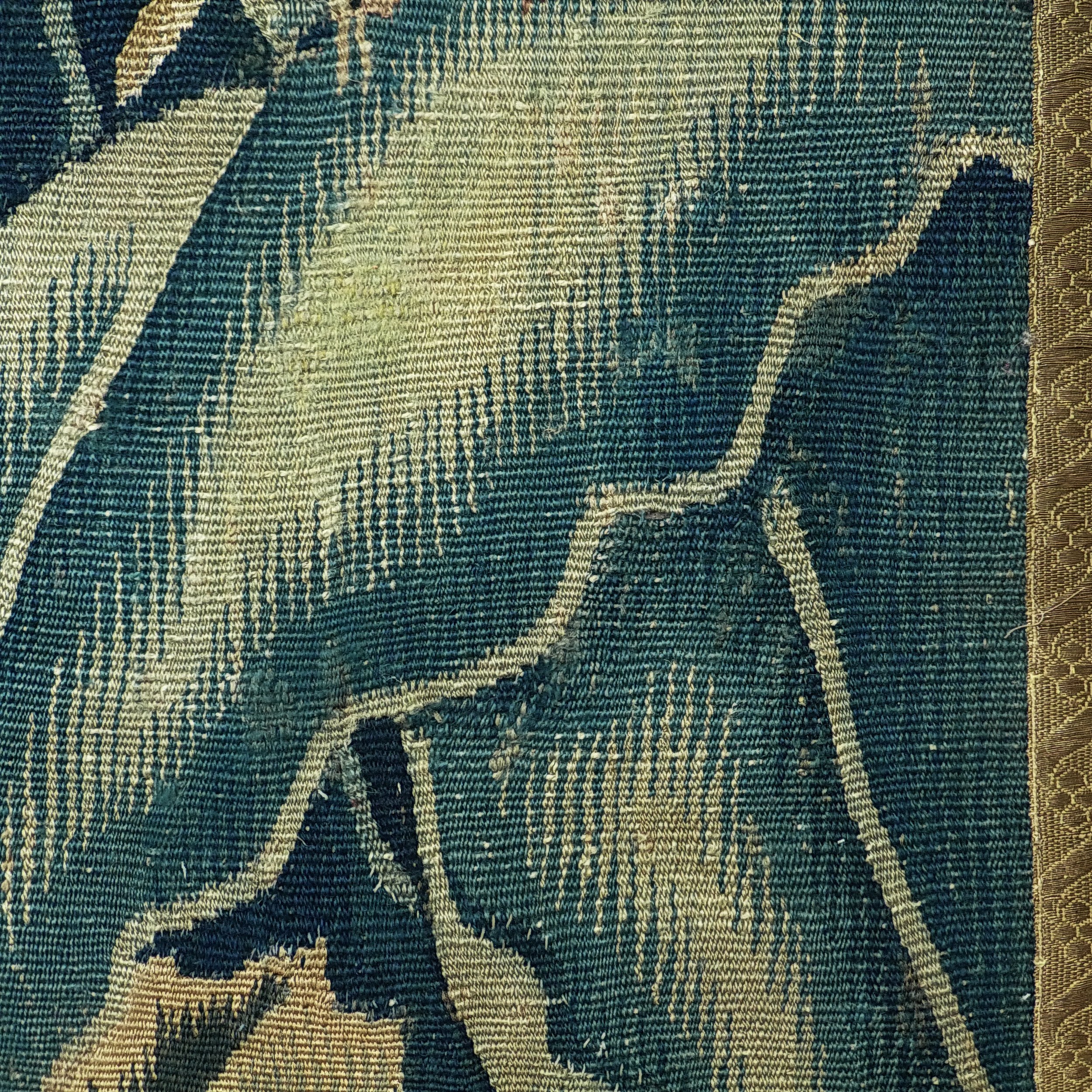A fragment of a 16th century large leaf tapestry
Circa 1550. Southern Netherlands, possibly Oudenaarde.
Woven in silk and wool with two bullfinches perched on a leaf and a foliate stem, with smaller serrated leaves, fruit, and flowers.
Tapestries of the type from which this fragment derived, sometimes termed feuilles de choux, or feuilles d’aristoloche (although the primary foliage is closer to acanthus, or bear’s breech), are notable for the predominance of the stylized broad curving leaves densely overlaying the entire ground within a surrounding border. Sometimes the effect of the leaves is tempered by the insertion of a balustrade, or a coat of arms, but in its unalloyed forms, the composition can verge on abstraction. This was embellished, to varying degrees, with flowers, fruits and birds - as in this instance - or larger and occasionally more exotic animals. Indeed, the almost overwhelming profusion, and claims that some of the plants can be identified as species brought back from the contemporaneous ‘voyages of discovery’, indicate a burgeoning fascination with the distant and exotic that, allied to an existing desire for an effective form of decoration, produced a result as impressive as it was outlandish.
The edges of the larger leaves, more gently undulating than in other examples, echo those of a tapestry at Owletts, Kent (collection no. NT1411231), which bears the Oudenaarde city mark to the lower galloon border.
Another comparable tapestry was sold as lot 50 at Christie’s King Street on the 31st October 2012.
The development of the large leaf design, and a proposed scheme of classification, is thoroughly discussed in the exhibition catalogue Giant Leaf Tapestries of the Renaissance, 1500-1600, S. Franses, 2005.
With restorations and areas of reweaving.
The tapestry 80cm (30½”) high and 51.6cm (20¼”) wide.
Bordered with gold braid and mounted on 17th century sized linen over a stretcher 100.4cm (39½”) high and 76.3cm (30”) wide.









